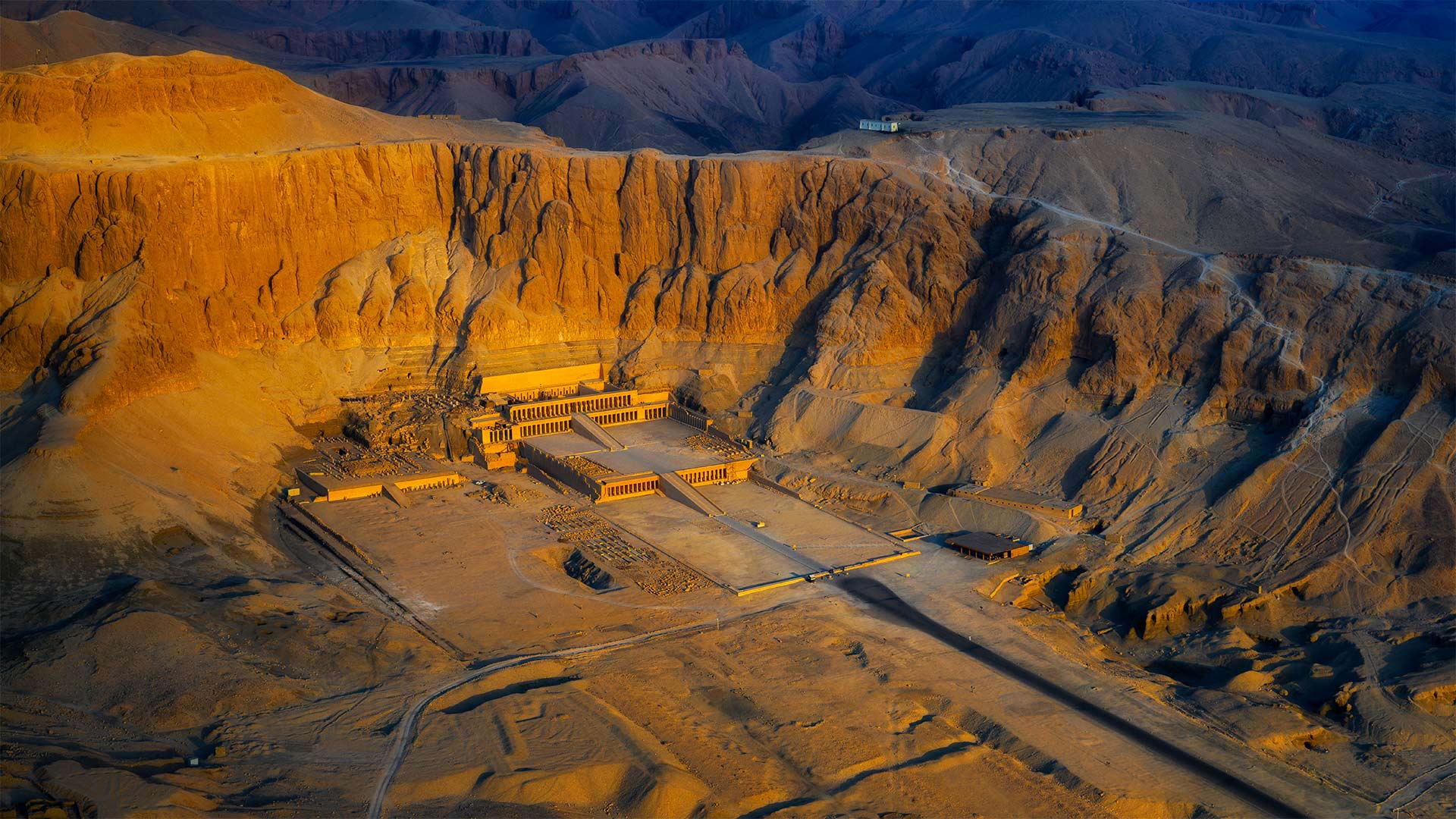标签 卢克索 下的文章
哈特谢普苏特女王神庙鸟瞰图,埃及卢克索古城 Aerial view of the Temple of Hatshepsut near Luxor, Egypt (© Ratnakorn Piyasirisorost/Moment/Getty Images)

哈特谢普苏特女王神庙鸟瞰图,埃及卢克索古城 Aerial view of the Temple of Hatshepsut near Luxor, Egypt (© Ratnakorn Piyasirisorost/Moment/Getty Images)
Unearthing a queen's lost tale
Almost 3,500 years ago under Queen Hatshepsut's reign, Egypt enjoyed decades of peace and flourishing culture, and this elegant temple is just one piece of her larger-than-life legacy. But the pharaoh who succeeded Hatshepsut forbade all mention of her rule, taking credit for her monuments and leaving her name all but unknown for millennia.
By the 19th century, many archaeologists had noticed a gap in the recorded succession of pharaohs. Through their efforts decoding hieroglyphics, cataloging artifacts, and finally excavating Hatshepsut's great temple in 1906, the greatest woman ruler of her time began reclaiming her place in the history books.
Isn't it lucky we have people willing to dirty their hands and dig up the truth? On International Archaeology Day, which happens every third Saturday of October, we're celebrating those who solve human history's mysteries: the archaeologists of the past, present, and future.
发掘一个女王丢失的故事
大约3500年前,在哈特谢普苏特女王的统治下,埃及享有数十年的和平与繁荣的文化,而这座优雅的神庙只是她超越生命的遗产中的一部分。但是继承哈特谢普苏特的法老禁止任何人提及她的统治,因为她的纪念碑而受到赞扬,数千年来她的名字几乎无人知晓。
到了19世纪,许多考古学家已经注意到法老王的继承记录有一个缺口。通过对象形文字的解码,对文物进行编目,并最终在1906年挖掘哈特谢普苏特的大庙,这位当时最伟大的女统治者开始重新在历史书中占有一席之地。
我们有人愿意弄脏他们的手,挖掘真相,这不是很幸运吗?在每年十月的第三个星期六举行的国际考古学日,我们要庆祝那些解开人类历史之谜的人:过去、现在和未来的考古学家。